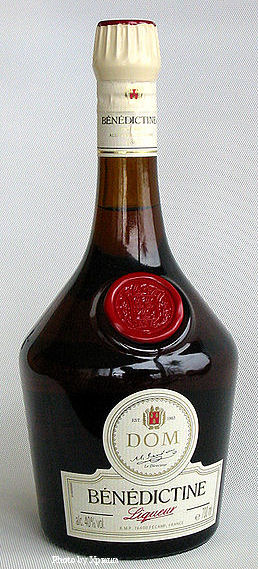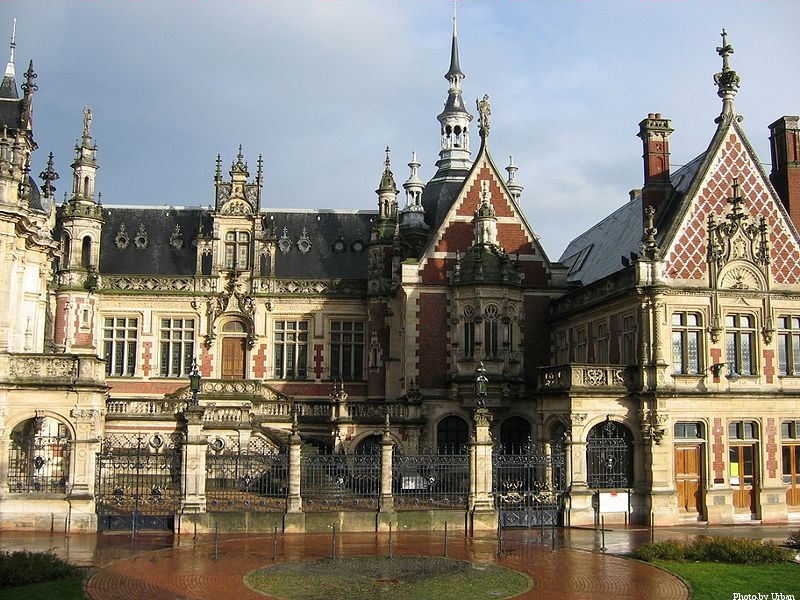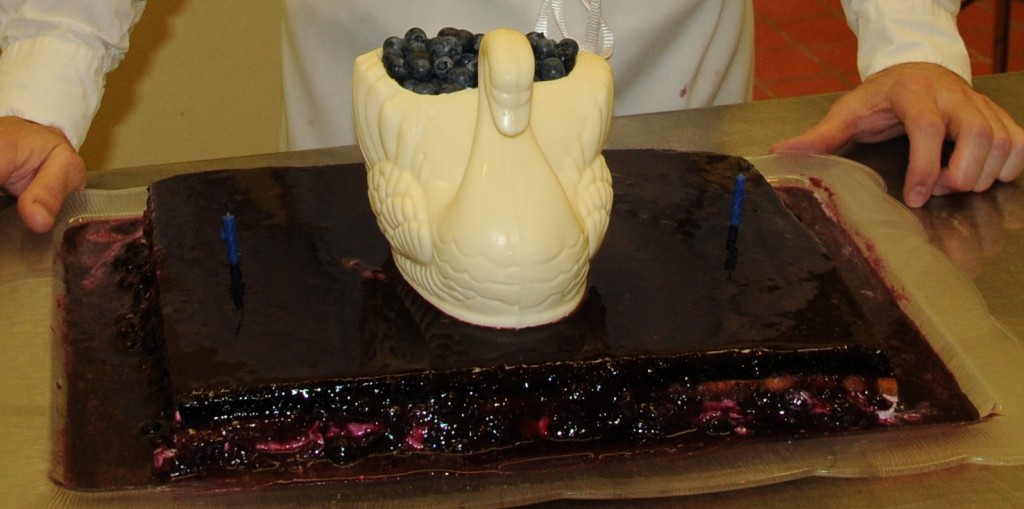150 year anniversary of D.O.M. Benedictine

Though shrouded in mystery, the origins of D.O.M. Benedictine are linked to the ancient Benedictine abbey of Fécamp on the French side of the English Channel, some 20 miles north of Le Havre.
Founded in 658, this ancient Benedictine abbey weathered trials and tribulations for centuries. Destroyed by Vikings, it was rebuilt in the early 11th century. In 1066, its abbot invited William the Conqueror and his court to establish themselves there while they prepared the Norman invasion of England.
But in 1789, the abbey that had withstood so well the test of time, would see enemies far worse than Vikings. The egalitarian Revolution that toppled both altar and throne in France, scattered its monks and pillaged the abbey itself.
Somehow or other an old Benedictine ledger from the abbey found its way to Alexander Le Grand’s family library. When Le Grand leafed through it one day, it was like opening a stained glass window into a different world. It afforded a glimpse of a society, culture and civilization that had developed under the blessing of St. Benedict and the Catholic Church. Benedictine monks had civilized a Europe overrun by barbarian hordes. Sons of St. Benedict had drained swamps and tamed forests, while quelling unbridled passions in souls and instilling in them the perfume of Christianity. Benedictines had built the magnificent monasteries, priories and abbeys–like so many jewels embellishing the countryside–while constructing the City of God in the hearts of men.

Dom Bernardo Vincelli, on the far right, along with other Benedictine monks at the Abbey of Fécamp, created an aromatic and medicinal herbal liqueur, which became what is universally acclaimed today as DOM Bénédictine.
Inside the ledger, Le Grand found a recipe for this herbal digestif liqueur. He made up his mind to prepare it, and worked at it until reasonably sure he had mastered the process. Like so many Benedictine productions, this liqueur, while satisfying palates, also invited one to lofty considerations, metaphysical thoughts, spiritual contemplation of a magnificent God, His infinite perfections, and their reflections in His Creation.
Le Grand knew he had stumbled on something extraordinary. He launched D.O.M. Benedictine commercially in 1863 and its popularity was instantaneous.
Today, 150 years later, this liqueur is appreciated around the world and calls us too to rise briefly above life’s routine troubles and hardships and ponder a higher, noble, and more sublime order of things.
Recipe
Blueberry Benedictine Mascarpone Mousse Cake
12 oz heavy cream
16 oz mascarpone cheese
8 oz cream cheese
1/4 cup confectioners sugar
1 lemon (for grated zest)
3 quarts fresh blueberries
1/2 cup granulated sugar
Two tablespoons non-flavored gelatin
5 oz Benedictine Liqueur
One pound cake – sliced thinly
Take cream cheese and mascarpone out of the fridge to soften at room temperature.
Put the blueberries and two tablespoons of water in a pot with lid, then pour granulated sugar on top. Simmer on very low heat for 20-30 minutes. Stir occasionally to ensure the sugar is well dissolved, then remove from heat.
Strain out two cups liquid blueberry sauce from the macerated blueberries that were simmered. The smooth liquid will be poured over the finished cake for the glaze.
Put the smooth blueberry liquid in the fridge to cool down, but keep the blueberry pulp mixture on the side.
Lightly and evenly, sprinkle two tablespoons of gelatin over four tablespoons of water (in a sauce pan) and let sit for a few minutes, then heat to dissolve. When gelatin is dissolved, add to the blueberry pulp. Then mix in the Benedictine and place the mix in the fridge. 
In the meantime, beat heavy cream until it forms VERY stiff peaks. Place immediately into the fridge.
Beat the softened cream cheese, adding the ½ cup confectioner’s sugar as you beat. Then add the grated zest of one lemon and continue to beat until creamy. Lastly add the mascarpone and beat for about half minute more, at low speed, to blend fully.
Take the blueberry pulp mixture (with the Benedictine) and beat into the mascarpone/cream cheese one tablespoon at a time.
Gently fold the blueberry mascarpone/cream cheese mix into the whipped cream. This is your final mousse mixture. Place in the fridge.
Line a large square baking pan with plastic wrap and pour half of the blueberry/mascarpone mixture on top of it. Then, lay thinly sliced pound cake pieces on top of that. Put the second half of the blueberry/mascarpone mix on top of the pound cake. Smooth the top nicely.
Let the cake set overnight. When ready to serve, turn it upside down onto a tray and take the plastic off carefully. Then, pour the two cups of smooth blueberry liquid evenly over the finished mousse cake, as a glaze.
The white chocolate swan is optional. For full swan recipe please write to info@nobility.org.
Copyright 2013 – Nobility.org















